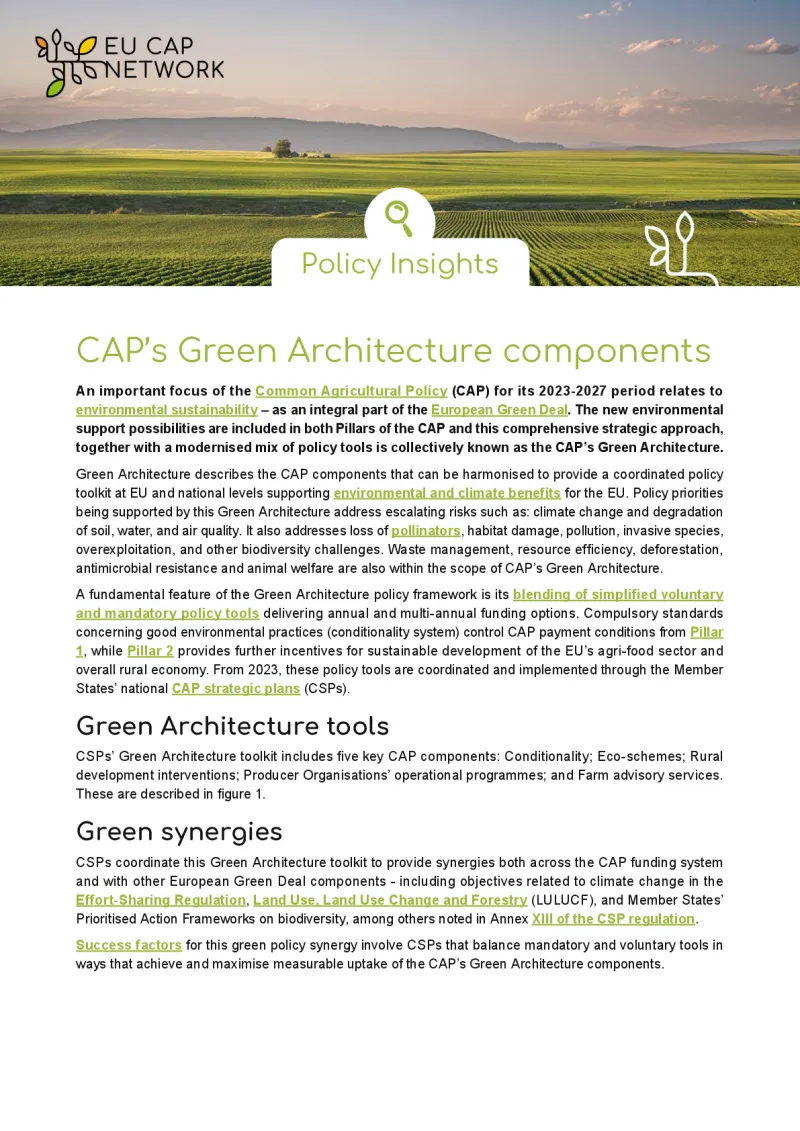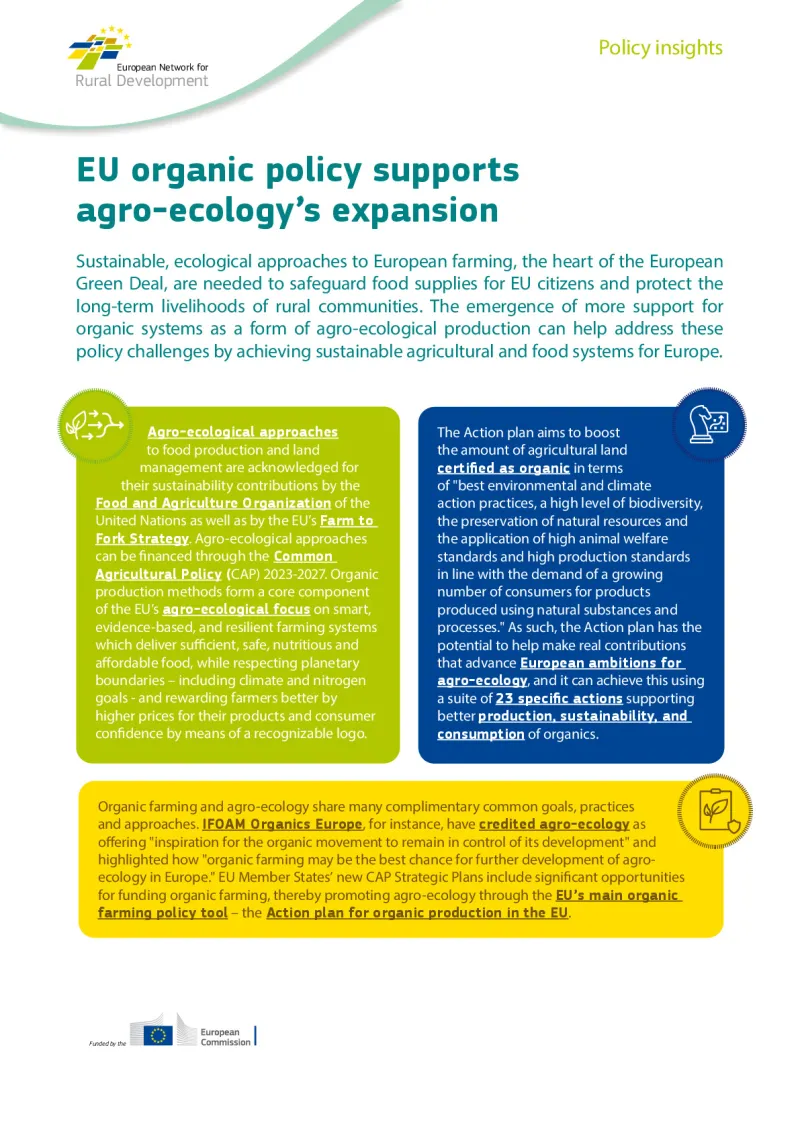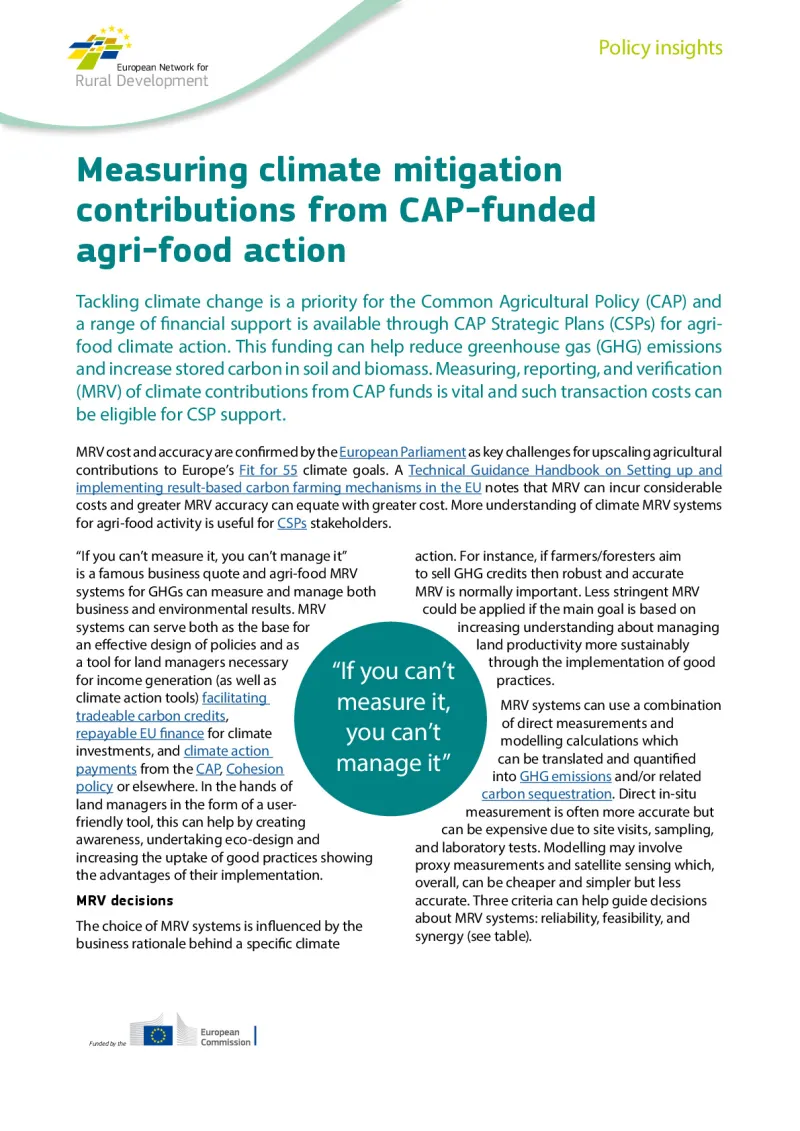Agroforestry opportunities
The new CAP Strategic Plans provide Member States with options and opportunities to support agroforestry systems where trees are grown on agricultural land to help boost farm incomes while improving environmental conditions.
- 2023-2027

Defined by the European Agroforestry Federation as planting trees on farmland or introducing agriculture in existing woodland/orchards, agroforestry opportunities are available for agricultural systems throughout Europe. International analysis by the United Nations advocates for wider uptake of agroforestry, observing that such land use systems tend to be more resilient than conventional agriculture to environmental shocks and the effects of climate change. Depending on the system and local conditions, agroforestry can improve crop productivity while allowing for better food security and nutrition as well as support a high percent of the biodiversity of natural forests.
Most agroforestry within the EU is currently constituted by livestock farms, where trees are established individually or in blocks within improved grasslands and traditional silvopastoral systems, like montados/dehesas. In these situations, grazing land is often combined with intercropping of permanent trees, offering additional products such as fruits, nuts, olives, or timber. Another option is to integrate agroforestry areas in and around arable land, as seen across much of the EU, including in outermost regions.
The article offers insights about the role of agroforestry and its advantages, then delves into CAP's role to support this land use and suggests ways to win the resistance of those farmers who still see agroforestry systems as less productive and thus financially risky.
Author(s)
CAP Implementation Contact Point



